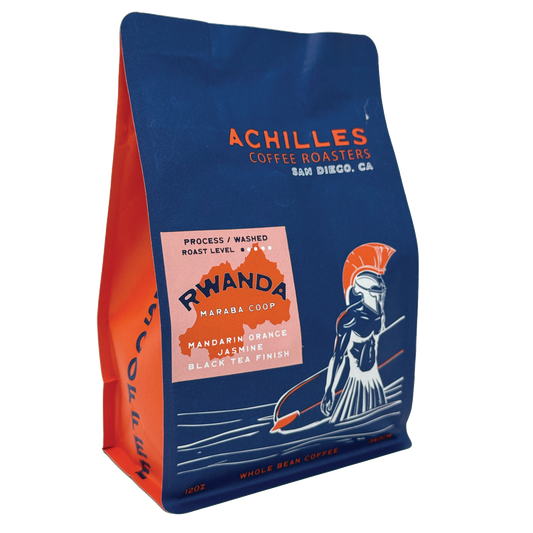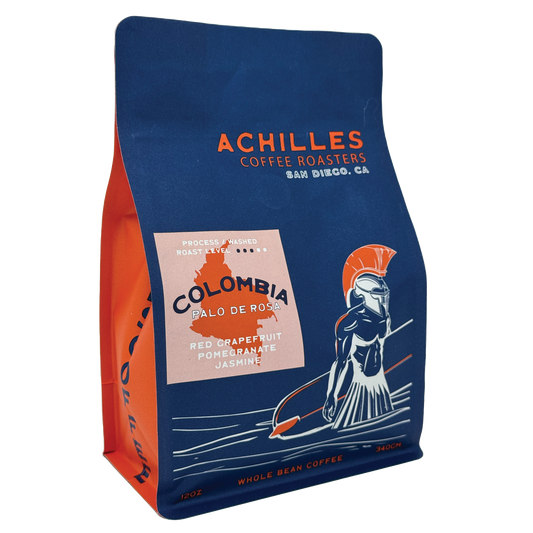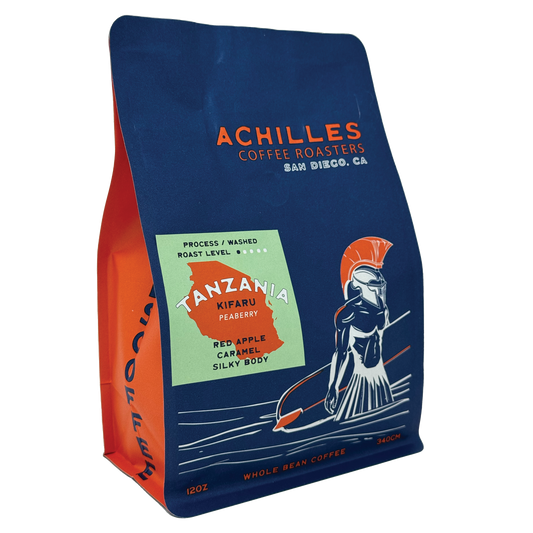Roasting coffee at home isn’t just for pros—it’s a rewarding, hands-on way to connect with your coffee and craft a truly personalized cup. If you’ve ever wondered whether you can roast green coffee beans at home, the answer is a resounding yes! And it’s easier to get started than you might think.
In this guide, we’ll cover:
-
What home coffee roasting is
-
Methods for roasting at home (from simple to advanced)
-
What to expect in terms of flavor, cost, and learning curve
-
Tips for success and safety
By the end, you’ll be ready to embark on your own home roasting adventure.
Why Roast Coffee at Home?
Freshness That Can’t Be Beat
One of the most compelling reasons to roast your own coffee is the incredible freshness. Roasted coffee begins to lose its aromatic compounds within days—sometimes hours—of roasting. Even vacuum-sealed or nitrogen-flushed packaging can’t fully preserve the vibrant flavors of truly fresh-roasted beans. When you roast at home, you’re in control of when the beans are roasted and how long they rest. You can brew them at peak flavor, often within 24–72 hours after roasting, resulting in a noticeably brighter, more aromatic cup.
Full Control Over Flavor
Roasting gives you the ability to shape your coffee’s flavor profile based on personal preference. Like your coffee bright and citrusy? Keep it light. Prefer nutty, chocolatey depth? Aim for a medium roast. Want a smoky, syrupy espresso? Take it darker. With a little practice and a reliable method, you can fine-tune every roast based on time, temperature, and bean origin. You’re not stuck with the roast level someone else chose for you—you can dial in exactly what you enjoy most.
Cost Savings in the Long Run
Green coffee beans are significantly less expensive than pre-roasted beans. While a high-quality bag of roasted coffee may cost $15–25 per pound, you can often buy top-tier green beans for $5–8 per pound—sometimes even less when bought in bulk. Plus, green beans have a shelf life of up to a year (or more if stored well), meaning you can stock up without worrying about freshness loss. The initial investment in a roaster can be recouped over time by consistently saving on the cost per cup.
Educational and Enjoyable
Roasting at home deepens your understanding of coffee at every level. You learn how factors like time, temperature, airflow, bean density, and moisture content impact the final taste in your cup. You’ll begin to notice the difference between origins, varietals, and processing methods—not just as abstract terms but as real, sensory experiences. Many home roasters find that roasting becomes a relaxing ritual, a form of culinary experimentation, and a point of pride when sharing coffee with friends.
Access to Unique Beans and Varietals
Home roasters have access to a wide variety of green beans from all over the world, often including rare or experimental micro-lots that don’t make it into mainstream coffee roaster inventories. Online green coffee suppliers make it easy to explore beans from Ethiopia, Colombia, Kenya, Sumatra, Panama, and beyond. Roasting these yourself lets you experience the full spectrum of coffee flavor—often in ways commercial roasters don’t attempt.
Customize for Brewing Method
Roasting at home allows you to tailor your roast to match your brewing method. Want a medium-light roast with high acidity and clarity for your pour-over? Done. Need something more soluble and syrupy for your espresso machine? You can roast specifically for that. Many commercial roasts are optimized for general use, but home roasting lets you roast with intention for French press, AeroPress, moka pot, cold brew, or any method you enjoy.
In short, home roasting puts the power of freshness, flavor control, and discovery directly into your hands. Whether you’re a curious beginner or a coffee obsessive, it’s one of the most rewarding ways to engage with the full life cycle of your brew—from green bean to glorious cup.
What You Need to Get Started
Green Coffee Beans
These are unroasted coffee beans—the raw agricultural product that becomes your morning brew after heat transforms it. Green beans are widely available through online retailers, coffee co-ops, and specialty shops. They’re usually sold by the pound or in bulk at a discount. Many suppliers include detailed origin information—such as country, region, farm, altitude, varietal, and processing method—so you can explore how these factors influence flavor. Try sampling beans from several regions (like Ethiopia, Colombia, or Guatemala) to experience the vast range of coffee profiles for yourself.
A Coffee Roaster (or DIY Setup)
You don’t need a commercial-grade roaster to get started. There are several options, depending on your budget and curiosity level:
-
Dedicated Home Roaster – Machines like the Behmor, Fresh Roast, or Gene Café offer excellent control over temperature, airflow, and roast duration. These are great for those who want repeatable results and are willing to invest a few hundred dollars.
-
Popcorn Popper – A common entry-level method. Hot air popcorn machines (like the West Bend Poppery II) can roast small batches (about ½ cup at a time). Make sure yours has side vents (not mesh at the bottom) for airflow and bean agitation.
-
Stovetop (Skillet or Whirley Pop) – A basic, hands-on approach. Beans are stirred constantly over medium heat until roasted. This method gives you maximum involvement but less precision.
-
Oven Roasting – Less common due to uneven heat and poor smoke control, but still possible with careful monitoring.
Choose your method based on how much control you want, how much smoke you can tolerate, and how often you plan to roast.
A Way to Cool Beans Quickly
After roasting, beans must be cooled quickly to stop the roasting process and preserve your desired flavor profile. You don’t need fancy equipment—just transfer the beans to a metal colander or spread them thinly on a baking sheet and stir or shake them until they cool to room temperature. A fan or cool outdoor air can help speed things up. Quick cooling helps retain aromatics and prevents over-roasting due to residual heat.
A Well-Ventilated Space
Roasting coffee produces a surprising amount of smoke and chaff (the thin papery skin that comes off the beans). Unless you’re using a fully enclosed machine with a smoke suppression system, you’ll need good airflow. Roast outside, near an open window with a fan, or under a strong range hood. Be aware that roasting smells are very different from brewed coffee—sometimes earthy, nutty, or even grassy at first—and they can linger.
Optional Tools (Highly Recommended)
-
Thermometer – Especially useful if you’re using a stovetop or popcorn popper. Tracking bean temperature helps you understand roast development stages (like first crack and second crack).
-
Digital Scale – Allows you to measure beans before roasting and track weight loss, which can indicate roast level (beans lose 12–20% of their weight during roasting).
-
Timer – Roast timing is critical. A stopwatch or timer helps track how long it takes to reach each stage.
-
Notebook or Roast Log – Recording details like bean origin, weight, time to first crack, total roast time, temperature, and tasting notes helps you improve over time and recreate successful roasts.
Stovetop Pan or Wok
This is the most accessible entry point for home roasting—perfect for beginners who want to experiment without investing in equipment.
How it works:
-
Use a heavy-bottomed pan (cast iron or stainless steel preferred) to help retain and evenly distribute heat.
-
Preheat over medium heat for a few minutes.
-
Add a single layer of green coffee beans, enough to cover the bottom but not too deep (overcrowding leads to uneven roasts).
-
Stir constantly with a wooden spoon or metal spatula to avoid scorching.
-
As the roast progresses, you’ll hear the first crack around 6–10 minutes (light to medium roast) and possibly second crack around 10–15 minutes (medium-dark to dark roast)
-
Once desired roast level is reached, remove the beans and cool them rapidly in a metal colander or on a baking sheet.
Pros:
-
Inexpensive—no special gear needed
-
Hands-on and engaging
-
Great for small batch experimenting
Cons:
-
Difficult to control heat precisely
-
Beans may roast unevenly
-
Very smoky—best done with ventilation or outdoors
Air Popcorn Popper
A cult-favorite tool among early home roasters, especially models with side vents and open tops.
How it works:
-
Use an air popper with hot air vents on the sides (not a mesh-bottom unit).
-
Add ½ cup (about 85g) of green beans—don’t overfill.
-
Turn on and monitor closely. The beans will agitate in the hot air stream.
-
First crack happens around 3–5 minutes, second crack around 6–8 minutes.
-
Tilt or gently shake the popper occasionally for even circulation.
-
Once done, pour beans into a colander and cool quickly.
Pros:
-
Affordable ($20–$40)
-
Fast roast times
-
Easy to see roast development through open top
-
Great learning tool
Cons:
-
Small capacity (great for 1–2 cups at a time)
-
Popper may overheat or burn out if used too frequently
-
Little control over temperature or airflow
-
Some models may not work well due to poor bean agitation
Oven Roasting
One of the simplest methods, but also the most unpredictable.
How it works:
-
Preheat your oven to 450°F (232°C).
-
Spread green beans in a single layer on a perforated baking sheet for better airflow.
-
Place tray on the middle rack.
-
Stir beans every 2–3 minutes to encourage even roasting.
-
Expect roast duration of 12–20 minutes depending on oven and bean type.
-
Watch closely during final minutes to prevent tipping into a burnt roast.
-
Cool rapidly after removing from oven.
Pros:
-
Uses standard kitchen equipment
-
Good for experimenting with larger batches than a popcorn popper
-
Mostly hands-off once roasting starts
Cons:
-
Hard to control heat distribution
-
Tends to roast unevenly without frequent stirring
-
High smoke production—use strong ventilation
-
Hard to hear crack stages in some ovens
Dedicated Home Coffee Roaster
These machines are designed specifically for coffee roasting, offering greater control, consistency, and capacity.
How it works:
-
Models range from compact, countertop roasters to advanced drum roasters with digital controls.
-
Beans are roasted using either convection (hot air), conduction (heated surfaces), or a combination.
-
Features often include variable temperature settings, timers, roast profiles, airflow adjustment, and even smoke reduction.
-
Roasts are more repeatable and customizable—ideal for dialing in your favorite profiles.
Popular models:
-
FreshRoast SR540 – beginner-friendly fluid bed roaster, fast and compact
-
Behmor 2000AB Plus – drum-style, larger capacity, programmable profiles
-
Aillio Bullet R1 V2 – premium option with full control and data tracking
Pros:
-
Precise and consistent results
-
Easier to monitor roast development (via temp readings, timers, etc.)
-
Some models have chaff collection and smoke suppression
-
Ideal for regular roasting or serious hobbyists
Cons:
-
Higher upfront cost ($200–$1,500+)
-
Slight learning curve to master full controls
-
Still produces some smoke and heat—needs proper setup
What Happens During Roasting?
Roasting coffee is a chemical and physical transformation that turns dense, grassy green coffee beans into the fragrant, flavorful brown beans we brew. Each stage of the roast affects the final flavor, body, aroma, and even how the beans behave during grinding and extraction. Understanding what happens during roasting helps you recognize when to stop—and what flavors you’re developing along the way.
Green Bean Stage
At the start, coffee beans are green, dense, and full of moisture (usually 10–12%). They smell vegetal and grassy and have very little of the aroma or flavor we associate with coffee. During this initial phase, the beans are absorbing heat, but no major color or scent changes have occurred yet. This stage sets the foundation for how heat will penetrate and react within the bean during roasting.
Yellowing Phase
As the beans continue to heat, they begin to turn yellow. This signals that moisture is escaping and internal chemical reactions (like the Maillard reaction) are beginning. The smell shifts from grassy to more like hay or toasted grain. Chaff (the thin outer skin of the bean) starts to separate and become more visible. This phase typically occurs between 300–330°F (150–165°C). It's a transitional period where sugars and amino acids are beginning to react, laying the groundwork for complex flavors.
First Crack
At around 385–395°F (196–202°C), beans reach the first crack—an audible popping or cracking sound, similar to popcorn. This is caused by built-up steam pressure inside the bean forcing its way out as water vapor escapes and cell structure breaks open. This marks the beginning of "drinkable" roast levels. At this stage, the beans expand in size, start to brown noticeably, and develop the familiar aroma of coffee. The roast is now considered light, and the flavor tends to highlight acidity, origin character, and delicate aromatics. Many specialty coffee roasters stop here or shortly after to preserve origin clarity.
Development Between First and Second Crack
This is often referred to as the development phase or the "roast development window." During this time, you can control how much sweetness, body, and balance the coffee develops. Extending this period slightly increases caramelization of sugars and reduces acidity, leading to a more balanced cup. Beans move from light to medium roast levels in this window.
Second Crack
At approximately 435–450°F (224–232°C), the second crack begins. It sounds sharper and more rapid than first crack, almost like Rice Krispies snapping. This is a sign that the cellular structure of the bean is breaking down further and oils are beginning to migrate to the surface. Roasts in this range are considered dark and develop a fuller body, lower acidity, and stronger bitter or smoky notes. Coffees begin to lose origin specificity and take on roast-driven flavors—like dark chocolate, toasted nuts, and charred caramel.
Beyond Second Crack
Pushing the roast past the second crack leads to very dark roasts, where oils coat the beans and carbonization begins. At this point, the coffee will taste more of the roast process itself—smoky, ashy, or even burnt—rather than the bean’s natural character. Some people prefer this intense flavor, but it's easy to lose balance and clarity. Unless you specifically enjoy French or Italian-style roasts, it’s best to stop shortly after second crack.
Why This Matters
Every stage in the roasting process creates or destroys flavor compounds. The earlier stages develop acidity and complexity, while the later stages deepen sweetness and body—or introduce roast bitterness. Understanding each step helps you decide where to stop the roast based on the flavor profile you want in your cup.
Flavor Profiles by Roast Level
|
Roast |
Color |
Flavor Notes |
|
Light |
Light brown |
Bright acidity, fruity, origin flavors shine |
|
Medium |
Brown |
Balanced acidity and body, caramel sweetness |
|
Dark |
Dark brown |
Low acidity, bittersweet chocolate, smoky |
Key Tips for At-Home Roasting
Roast in a well-ventilated area
Roasting coffee produces significant smoke and chaff, which can set off smoke alarms or linger indoors. Ideally, roast outside on a patio, in a garage with the door open, or near a window with good airflow. Proper ventilation helps keep your space comfortable and prevents smoke buildup that can affect flavor or your health.
Cool beans quickly to stop the roast
Once your beans reach the desired roast level, it’s essential to cool them rapidly to halt the roasting process immediately. Spread the hot beans in a thin layer on a metal baking sheet or colander. Stir them continuously with a spoon or toss gently to release heat and prevent residual cooking. Rapid cooling preserves the flavor profile you’ve developed and prevents over-roasting or bitterness.
Keep a detailed roast log
Documenting each roast helps you track what works and refine your technique over time. Record details like the coffee origin and varietal, roasting method used, total roasting time, temperature readings if available, and when you hear the first and second cracks. Note tasting impressions after brewing. Over weeks and months, this log becomes an invaluable tool for consistency and improvement.
Rest beans 12–48 hours after roasting before brewing
Freshly roasted coffee beans release carbon dioxide—a process called degassing. Brewing immediately after roasting can result in uneven extraction and off-flavors. Let your beans rest in a breathable container at room temperature for 12 to 48 hours to allow gases to escape. This rest period balances aroma, sweetness, and mouthfeel, producing a smoother, more balanced cup.
Clean up chaff regularly
Chaff is the thin, papery skin that flakes off beans during roasting. It can accumulate quickly around your roasting area and equipment, creating a mess and potentially clogging machinery. Clean your workspace and roasting tools after every batch to maintain a tidy environment and avoid any burnt chaff flavors transferring to your next roast.
Safety Notes
-
Never leave roasting beans unattended.
-
Be cautious of smoke alarms indoors.
-
Use heatproof gloves if handling hot equipment.
-
Be aware of the potential for equipment damage (popcorn poppers can overheat).
FAQs
Is home roasting cheaper?
Yes. Green beans often cost 30–50% less than roasted beans, and they last longer unroasted.
Does home roasting take a long time?
No. Most roasts finish in 8–20 minutes, plus cooling time.
Can I roast dark enough for espresso?
Absolutely. Just watch carefully after second crack.
Where do I buy green beans?
Look for specialty online retailers, local roasters who sell green coffee, or home brewing supply stores.
Conclusion: Give Home Roasting a Try!
Home roasting opens up a whole new world of coffee exploration and enjoyment. It’s a rewarding process that allows you to connect deeply with your coffee—from raw green beans all the way to the final cup. Whether you’re starting simply with a stovetop pan or wok, or you decide to invest in a dedicated home roasting machine, each roast is a hands-on experience in creativity and craftsmanship.
By roasting at home, you gain control over every aspect of the flavor profile, adjusting roast levels to suit your personal preferences. You’ll discover how subtle changes in time and temperature transform the beans, helping you develop a refined palate and a better understanding of coffee’s complexity. Plus, freshly roasted beans deliver unbeatable freshness and vibrant aroma that can’t be matched by pre-roasted options.
Home roasting is also a fun, educational hobby that can turn coffee preparation into a daily ritual rather than just a routine. You’ll enjoy experimenting with different origins, roast styles, and brewing methods—all while saving money and impressing friends with your unique, fresh coffee creations.
So why not take the leap? Give home roasting a try and embark on a flavorful journey that brings your coffee experience to an entirely new level. The satisfaction of sipping a cup made from beans you roasted yourself is truly unmatched.








